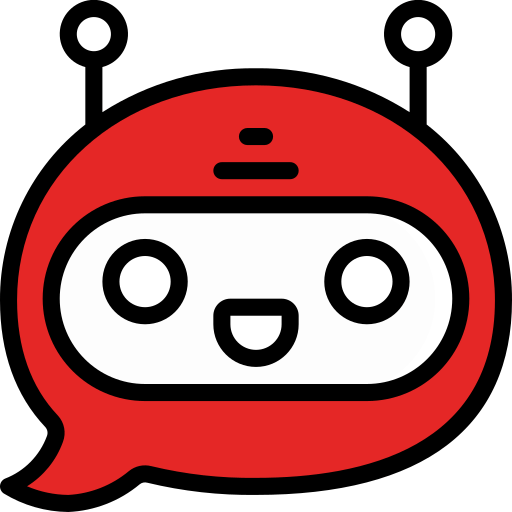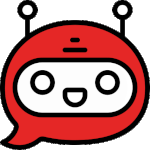Blog

Maximizing Enterprise Potential with ChatGPT and GPT-4: A Practical Approach
In November 2022, OpenAI, a leading artificial intelligence research and development enterprise, launched ChatGPT. Its unveiling received a divergent global reaction - While some raved about its advanced functionalities, others expressed apprehension regarding its future implications. Nevertheless, its growing popularity can be attributed to various factors, with professionals across multiple industries extensively using this emerging technology for numerous use cases. As per CNBC records, ChatGPT now has 100 million active monthly users, and it is even expected to grow in the coming years.
This blog gives the lowdown on this latest technology and its potential to aid enterprises in achieving the necessary growth.
What is ChatGPT?
ChatGPT is an AI-powered natural language processing tool that generates unique texts. It doubles up as generative AI and conversational AI - this means it can generate written text and communicate fluently with humans using natural language. It is trained on the massive scale of data from varied resources, which empowers it to generate informed and relevant responses to a wide range of questions posed by its users.
How Does ChatGPT Help Enterprises?
ChatGPT offers numerous advantages to your enterprise, including:
Market Research
Building a business and its marketing go hand in hand. The right go-to-market strategy can truly help scale the business in the right direction – Here’s where ChatGPT can be a game changer. Combining machine learning and natural language, the platform assists enterprises in various ways, such as conducting surveys, analyzing data from multiple sources, identifying potential competitors, and running personalized campaigns. It can also provide deep insights to help the business make better and informed decisions.
Business Productivity
With ChatGPT, enterprises can empower their workforce with automation to boost productivity levels. For instance, ChatGPT can proficiently produce marketing materials like social media posts and emails, manage customer complaints, and generate comprehensive reports, translation, and data analysis – this way, employees can focus on tasks that require creativity, critical thinking, and human intervention.
Lead Generation
ChatGPT offers a range of solutions for lead generation. It can create highly interactive chatbots to assist website visitors and collect their information to offer personalized service. It can also help with lead qualification by asking relevant questions and gathering information about a lead's interests and needs. Marketers can leverage this information to determine whether a lead is a good fit for the business and, later on, can be passed on to sales teams for follow-up.
In addition, it can create a variety of content types, including blog posts, whitepapers, and e-books - which in turn can be optimized for search engines, making it easier for potential leads to discover the business.
Code Writing
ChatGPT can help enterprise developers write code more efficiently, producing better-quality code. For example, ChatGPT’s auto-completion feature offers suggestions for code snippets, function calls, variable names, etc. This reduces code development time and potential errors. It can also review and optimize the code and identify bugs. To facilitate the maintenance of the application in the future, it assists with code documentation and high-level instruction of functionalities - this helps new or non-proficient developers understand key features without any hassle.
Customer Support
By automating certain tasks, ChatGPT can provide customers with efficient and prompt service, ultimately resulting in increased customer satisfaction and loyalty. ChatGPT can be leveraged for creating more advanced and effective chatbots. Its ability to learn from large amounts of data can help the chatbot become more intelligent and adaptable to different situations, enhancing the overall user experience. ChatGPT’s wide range of features can offer 24/7 support, instant responses, and personalization. It can also help with order processing, tracking shipments, and order status updates, allowing human support agents to focus on more complex inquiries. Additionally, in case of any complaints, ChatGPT can manage them effectively and escalate them to human support agents when needed.
How is ChatGPT-4 different from ChatGPT?
ChatGPT-4 is OpenAI’s latest release and this powerful tool can be leveraged for several use cases.
See the below table to find the difference between ChatGPT and GPT-4
| ChatGPT | GPT-4 |
|---|---|
| It is unimodal, meaning it takes input from one form, i.e.-text. | GPT-4 is multi-modal; it can take inputs from texts and images. |
| ChatGPT is restricted to only some languages. | GPT-4 is multilingual; it is trained to process different languages. |
| ChatGPT can process nearly 4,906 tokens or 8,000 words at a time. | GPT-4 handles up to 32,768 tokens or 64,000 words. |
| It can tamper with facts and produce misinformation at times. | GPT-4’s deep analysis makes it relatively faster and more accurate than ChatGPT. |
Best Practices for Implementing ChatGPT and GPT-4 in an Enterprise
- Identifying the right use case: Before implementing ChatGPT or GPT-4 in an enterprise setting, it's important to identify the use case where it can add the most value. This could range from automating customer service to generating personalized product recommendations for e-commerce websites. By focusing on a specific use case, it becomes easier to define the scope of the project and set clear goals for what you want the model to achieve.
- Ensuring data privacy and security: It is crucial to ensure that data privacy and security are a top priority, every time you work with customer data. This means taking steps to protect user data both during training and deployment, such as using secure storage, encryption, and access controls. It's also important to comply with relevant data privacy regulations, such as GDPR in Europe or CCPA in the US.
- Training the model with quality data: The performance of ChatGPT and GPT-4 models depends heavily on the quality of the training data. It is imperative to use high-quality, diverse data that reflects the range of inputs and outputs you expect the model to handle. It's also important to continually monitor the model's performance during training and adjust data as needed to improve accuracy.
- Regular model maintenance and updates: Like any AI model, ChatGPT and GPT-4 require regular maintenance and updates to ensure that they continue to perform well over time. This includes monitoring performance in production, addressing any issues that arise, and updating training data as needed to reflect changes in user behavior or business requirements. It's also important to stay up-to-date with the latest research in natural language processing and incorporate new techniques as appropriate.
This space is becoming increasingly competitive - Google has also introduced its own Conversational AI called Bard, which offers high-quality responses based on the information culled from the web. For more information, check out Preply’s latest comparison study between Google and Bard. Besides these giant companies, many start-ups also have begun dipping their toes in the AI landscape.
Conclusion
Overall, ChatGPT has a promising potential to improve the effectiveness and productivity of various business operations. Its versatility enables it to handle a wide range of requests and cater to specific industry needs. However, it is essential to acknowledge the potential limitations and ethical considerations associated with implementing it – incorrect or biased results and privacy issues could be some of the concerns. Therefore, businesses should take a proactive approach to mitigate any negative implications and unleash the potential of this technology.
Looking to steer your enterprise towards a technology-driven path powered by AI/ML? Read our blog on how to accelerate business success with AI or get in touch with us for a quick conversation.


